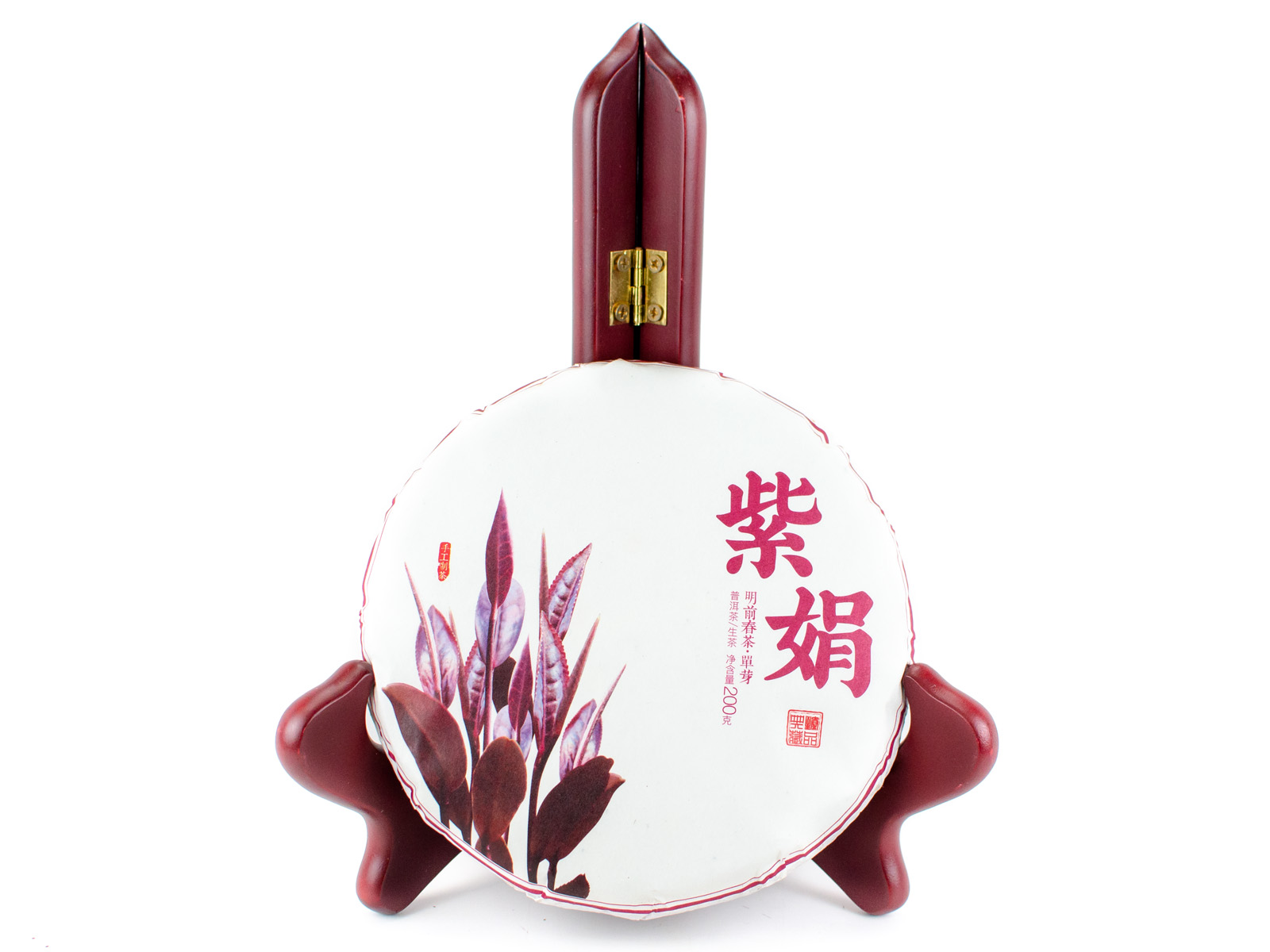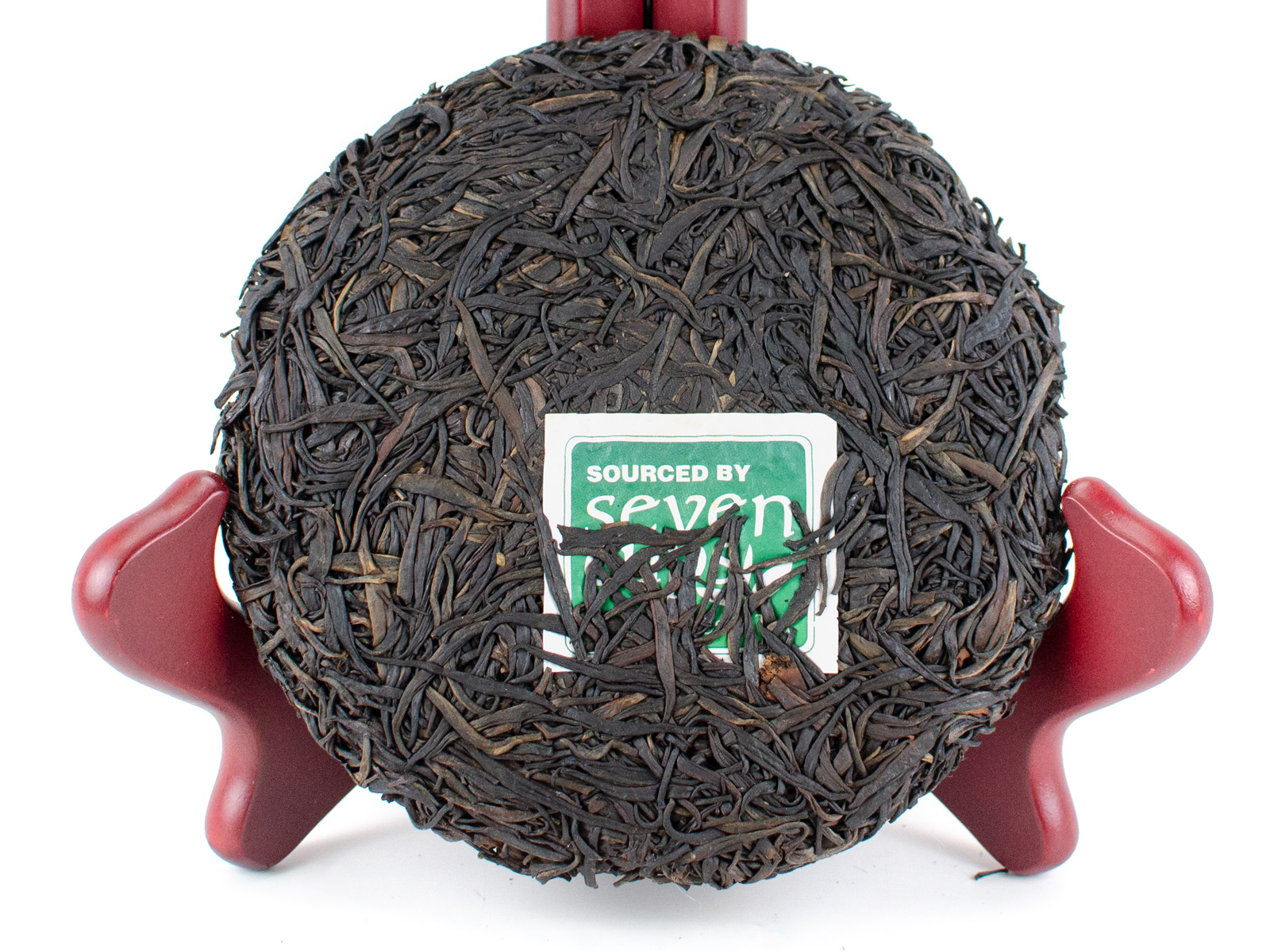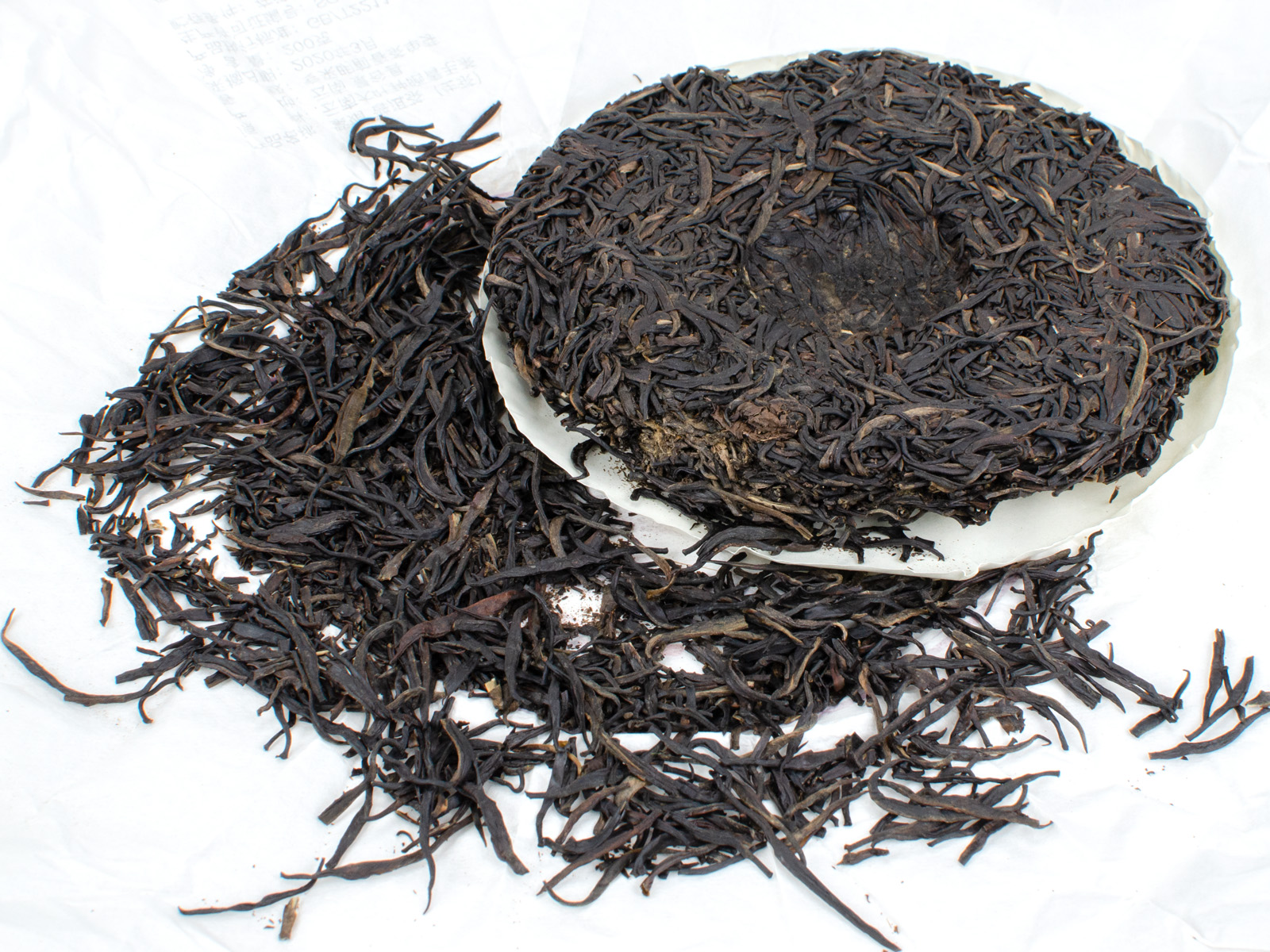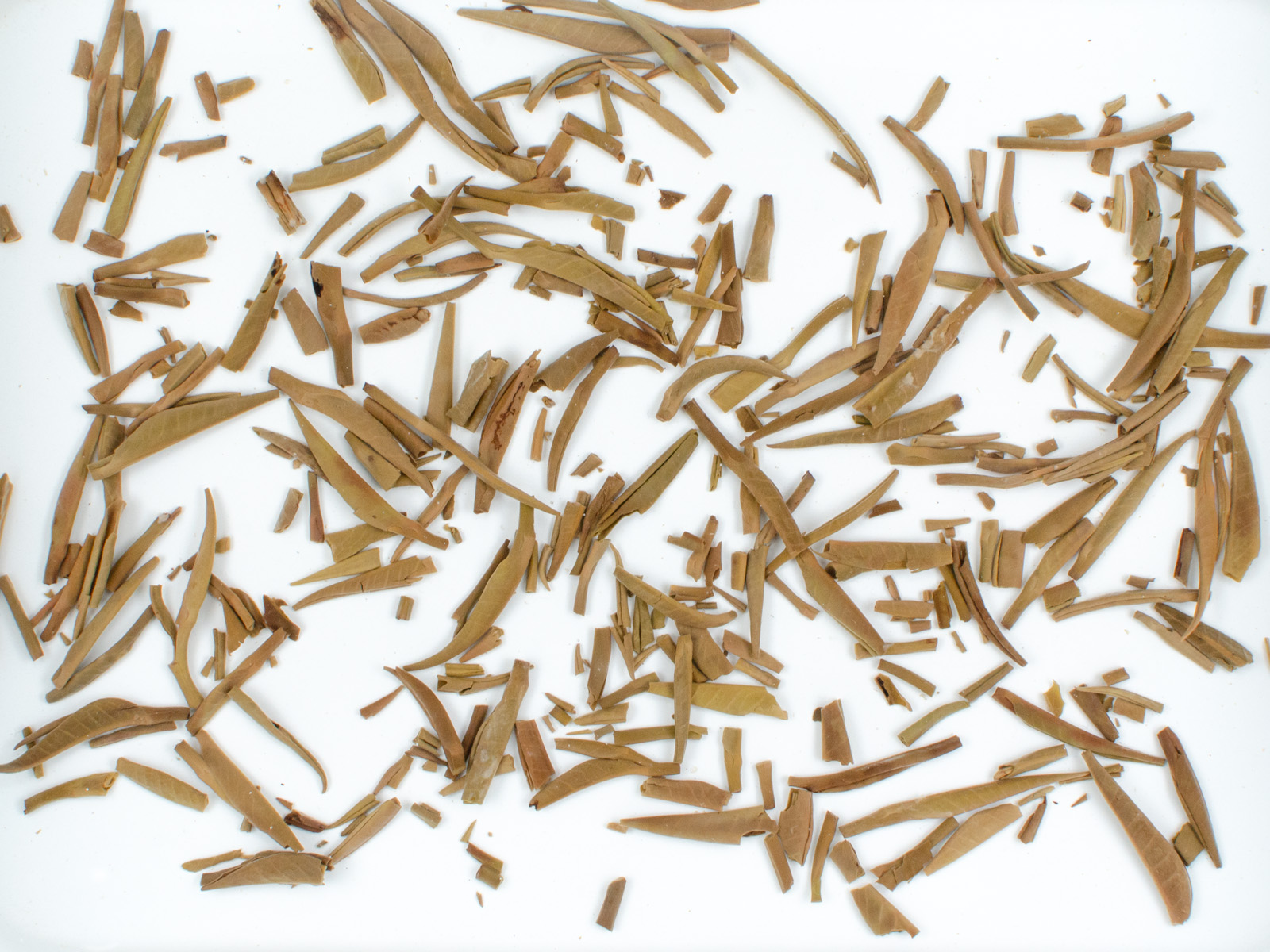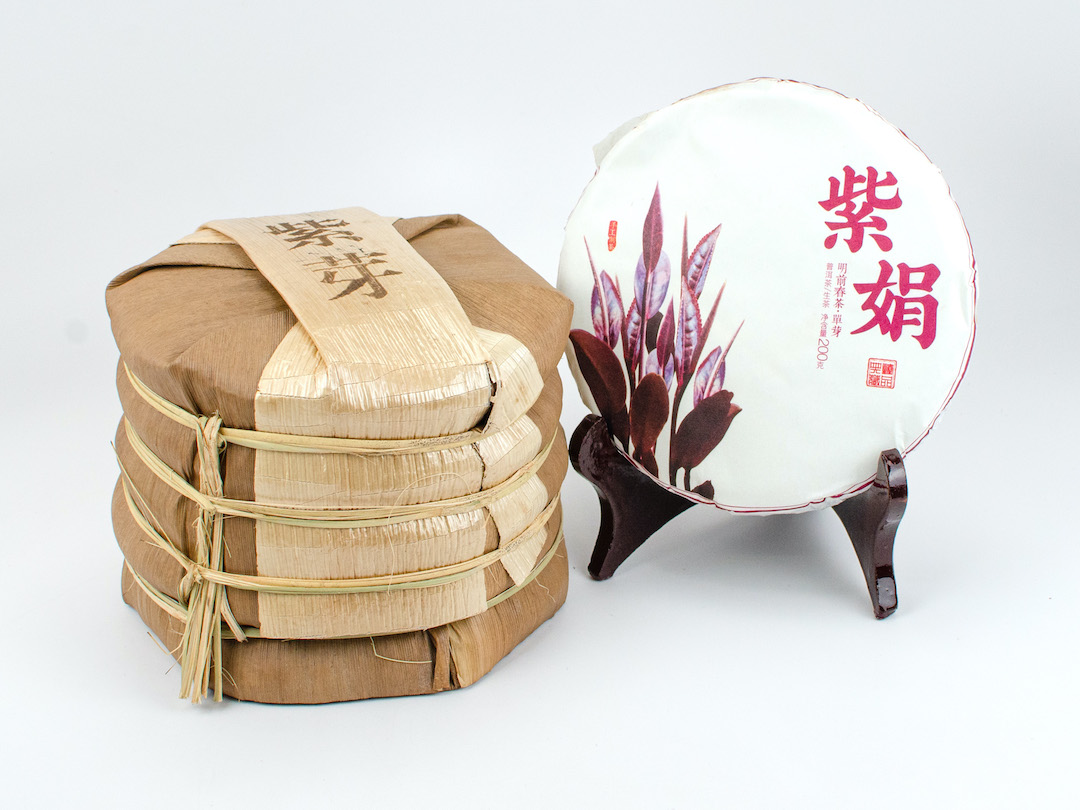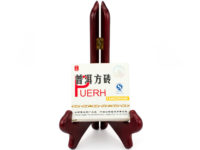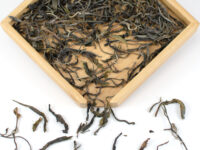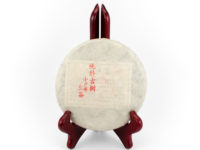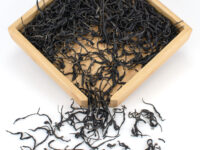Zi Ya (Purple Buds)
Sheng Puer Cake 200g 2023
An incredibly nutrient-rich tea made with all young tea buds from old-growth purple tea trees, high in colorful anthocyanins. Unique rich and sweet floral aroma with persistent sweet, savory, and umami flavors and mild astringency.
$89.00
Out of stock
Would you like a notification when this product is back in stock?
- Tea Origin
- Xiaojinggu Area, Jinggu County, Pu'er City, Yunnan Province, China
- Tea Bush
- Zijuan Quntizhong (Purple Leaf Heirloom Yunnan Tea Tree)
- Tea Maker
- Gong Liping and Ran Yijun
- Harvest Time
- Late March
- Plucking Standard
- One bud
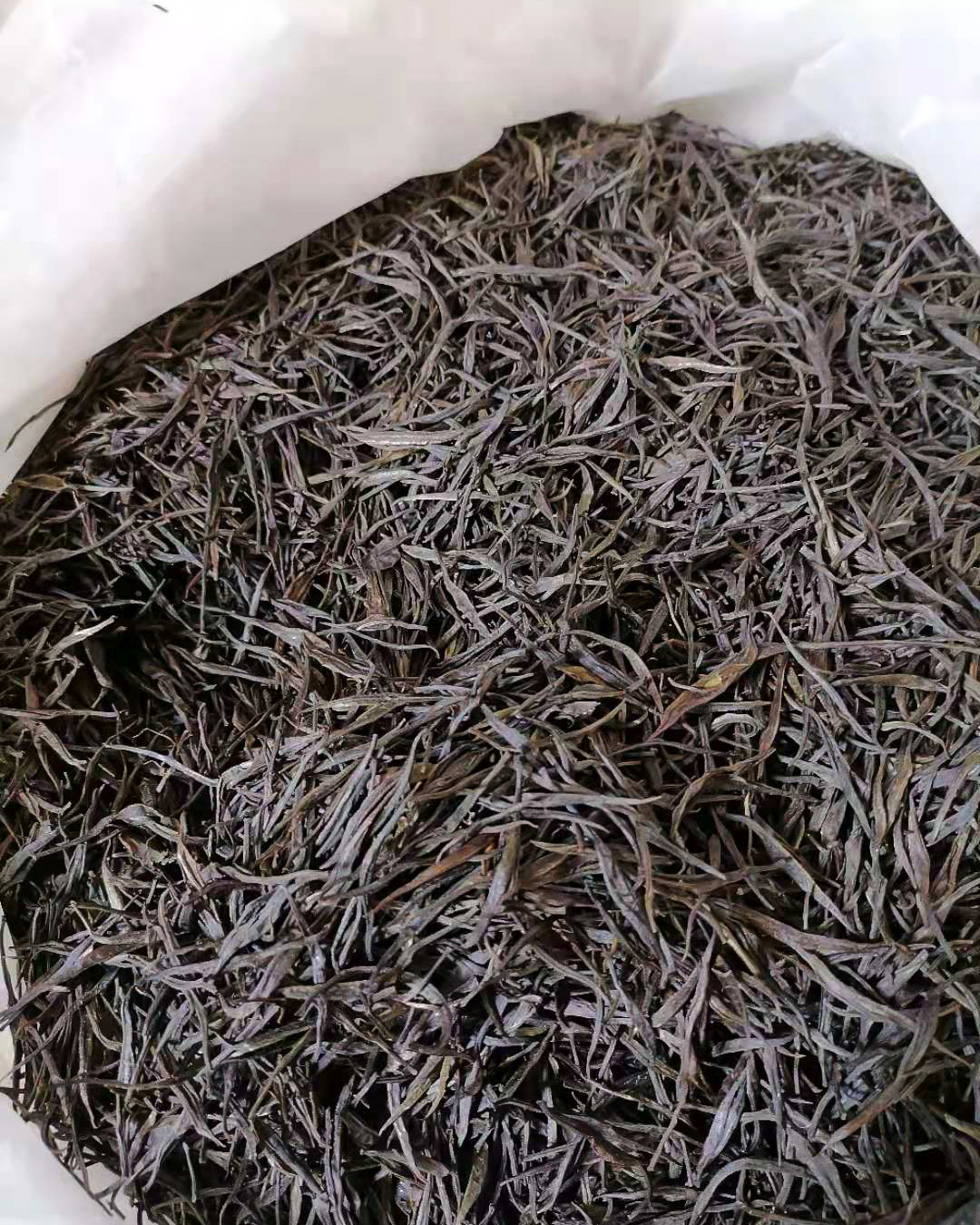
This rare sheng puer tea is made using all young tea buds from old-growth purple tea trees. These purple buds are plucked during the very earliest harvest of the spring, before the Qing Ming festival on April 5th. The glossy orange-yellow infusion has lots of fragrant tea oils that swirl on its surface, creating a unique rich and sweet floral aroma reminiscent of sun-dried tomato. Its lingering flavor contains complex sweet, savory, and umami layers with notes of green olive and has a mild astringency compared to other sheng puers.
Purple tea’s color is, of course, its most distinctive characteristic. While the fresh leaves are a rich purple-red, the dried leaves appear black. The unusual coloration indicates a high concentration of anthocyanins (flavonoids) and amino acids. With its unusual coloring, old-growth forest tree source, and very young plucking as unopened tea buds, this is an incredibly nutrient-rich tea.
Tea production
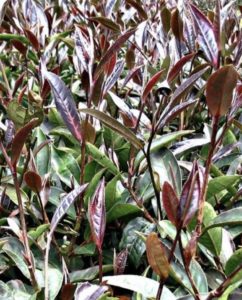
A tea plant that exhibits purple-colored new growth will always produce purple leaves every year. However, only the youngest leaves will display the distinctive purple coloration. The unusual color is darkest when young, fading to a more usual green as they mature. The tea for this Zi Ya cake is harvested at the very youngest stage of growth in the early spring when it is still a single tea bud, so the color is quite intense.
After being processed into dry maocha, these purple tea buds are steamed and compressed into small 200g sheng puer cakes. When dry, purple leaves turn very dark, almost black, instead of green.
History of purple tea in Jinggu
Zijuan comes from Jinggu County, a region famous for producing puer tea. Jinggu is is home to more purple leaf tea bushes than any other region in Yunnan. Purple leaf bushes are difficult to find and require many different conditions of soil and environment to grow. However, Jinggu now has more purple leaf tea plants than other regions. In the 1960’s, the Chinese government purposefully propagated seeds from tea trees that produced purple leaves. Since tea plants grown from seed are all genetically different, some of those seeds gave rise to new purple-flushing tea plants, while others were the usual green color. The leaves for this cake come from both these now 50-60 year old propagated trees and from the original older purple trees still living in Jinggu.
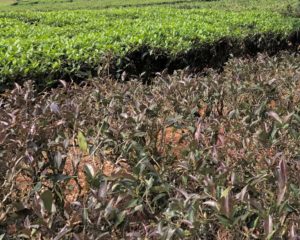
The specific tea plant used to make this tea is the original variety named Zijuan. One of the rarest varieties of tea plant, Zijuan is well known for its intense reddish-purple color that saturates the first several young leaves of new growth and even the stem they grow on. While there are many varieties of purple tea plant, Zijuan is one of the darkest. Some of our other teas like Hei Tiao Zi (Black Stripe) are made from a lighter variety which has purple leaves yet green stems. Since the 1980s, tea scientists from the Tea Research Institute at the Yunnan Academy of Agricultural Sciences have developed a super-dark purple tea cultivar from the original Zijuan trees. The leaves of this second-generation Zijuan cultivar are noticeably darker in color even when fully mature. Second-generation Zijuan plants are typically reserved for making green tea.
No chemical fertilizer, pesticide, or herbicide was used in the production of this tea. Click here to read more about our promise to fair trade and the environment.
Total cake weight may vary due to the gradual moisture loss with aging.

